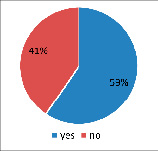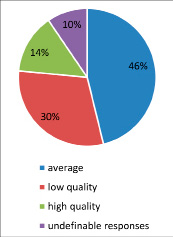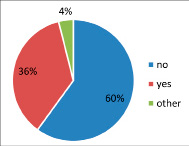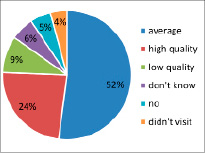Introduction
In modern conditions of human society development, there is an increase in the number of people with disabilities and up to 12% of the world’s population are people with special needs (WHO). Moreover, dental morbidity occupies a leading position in terms of prevalence among diseases of all classes, and dental services are one of the most popular types of medical care in most countries of the world, especially in children [1, 2]. It is known that the pathology leading to severe disability since childhood are diseases of the central nervous system, neuropsychiatric disorders and congenital malformations: cerebral palsy -45%, autism spectrum disorders – 29%, Down syndrome – 26% and others. Moreover, such children have high levels of lactoferrin in the oral fluid – 1.33±0.07 mcg/ml, decreased secretory immunoglobulin A – 0.218 ±0.001 g/l and low lysozyme activity – 20.0±2.5%, leading to immune abnormality. They also have increasing trends in dental diseases reaching 95-98% [3], and oral sanitation of this category of persons is carried out in only 20%, mainly in conditions of general anesthesia [4]. It is clear that the high prevalence and incidence of dental pathology, inflammatory diseases of periodontal tissues, foci of odontogenic infection alongside of very poor oral hygiene are the hallmark of most patients with disabilities [5].
In modern conditions, the study of the features of oral pathologies and the search for ways to improve dental care for children with disabilities is of medical and social relevance, taking into account the UN Declaration on the Rights of People with Disabilities. Dental care for children with neuropsychiatric diseases, especially those with autism spectrum disorder (ASD) is objectively complex and ineffective, due to the specific clinical course of comorbid pathology and low compliance [6, 7].
Thus, the issue of interaction between parents and the attending physician during dental manipulations for children with autism spectrum disorder is of great importance, which is to date unresolved and needs active solution finding. Dental care received by children with this pathology in the Kyrgyz Republic is at a very low level which often makes the whole family suffer [1].
The purpose of the study: to analyze the state of dental care in children with neuropsychiatric diseases in the Kyrgyz Republic by means of a questionnaire survey of families.
Materials and methods of research
An online medical and social survey – 1157 families (respondents) with statistical processing of the results of the questionnaire was conducted. In these families there were children with various neuropsychiatric diseases. The questionnaire contained certain questions and indicators such as: the child’s data; whether your child had to receive dental examination and treatment; the quality of dental care provided to children in public health organizations at the primary level – polyclinics; whether the child is a user of dental services in non-governmental medical institutions; respondents’ assessment of their quality for dental services in non-public medical institutions; how many times your child brushes his teeth; how your child brushes his teeth.
Results of the research and discussions
According to the results of a medical and social survey of the family respondents, responses to the question whether your child has ever received dental examination and treatment were as follows: 59.5% (688 children) answered “Yes”, and 40.5% (469 children) answered “No”. These statistics demonstrate that approximately two-fifths of children with pathologies of central genesis are either unable to access appropriate dental care or do not seek it due to a variety of barriers. These findings are presented in Figure 1.

Fig. 1. Responses of parents of children with neuropsychiatric diseases regarding dental examination and treatment
In a survey of the quality of dental care provided to children with pathologies of central genesis in public polyclinics: the largest number of respondents 46.2% rated it “average quality”, and 30.3% – “low quality”, only 14% of respondents rated it “high quality”. The rest were unclear answers: “I do not know”, “No”, “Did not seek it”, which together amounted to 9.5%.
In general, this indicates how much respondents do not trust or do not want to contact public dental clinics at their place of residence for examination and treatment. Hence, there is a need to develop a new integrated organizational approach to the provision of dental care regarding the level of communication and socialization of children in the Kyrgyz state (Figure 2).

Fig. 2. Responses of parents regarding the quality of dental care provided to their children with neuropsychiatric diseases in public polyclinics
At the same time, the question “is your child a user of dental services in non-public medical institutions” was were answered by respondents: “No” – 60%, and “Yes” – 36.1%, and other answers were in the form of “Not yet”, “Very expensive”, etc., totaling 3.9%. Accordingly, it should be noted that only 36.1% respondents with children of this group seek medical attention from non-public dental clinics. It also becomes clear that the rest do not seek non-public care at all or cannot afford it financially and economically (Figure 3).

Fig. 3. Responses of parents on using dental services in non-public polyclinics for their children with neuropsychiatric diseases
It should be noted that the respondents’ assessment of dental services in non-public medical institutions revealed that the largest portion of respondents of 52.1% rated them as “average quality”, and 23.5% – “high quality”, 9.2% – “low quality”. The remaining 15.2% of responses were in the form of “I do not know”, “No”, “Did not resort”. It is clear that most respondents consider the quality of dental services provided in non-public medical institutions to be average. There is a certain difference in the rating of dental services as “high quality” 14% for public medical institutions and 23.5% for non-public ones, indicating the preferences and trust of respondents (Figure 4).

Fig. 4. Rating of dental services for children with neuropsychiatric diseases in non-public clinics
Regarding oral hygiene: how many times a child brushes his teeth, the answers were as follows: 36.9% – “Once in the morning”, 29.2% – “Every other day”, and 18% – “twice a day”, and other responses “Do not brush”, “Once in the evening”, “Rarely” and “No” made up 15.9%.
These data revealed the quality condition of oral hygiene suffers, with only 18% of children observing recommended oral hygiene guidelines (Figure 5).
At the same time, the respondents answered the question “how does your child brush his teeth” as follows: 74.7% – with the help of parents, 17.7% – by himself (herself), and never brush teeth – 7.6%. This contingent of children brush their teeth in most cases only with the help of parents (Figure 6).
These data revealed the quality condition of oral hygiene suffers, with only 18% of children observing recommended oral hygiene guidelines (Figure 5).
At the same time, the respondents answered the question “how does your child brush his teeth” as follows: 74.7% – with the help of parents, 17.7% – by himself (herself), and never brush teeth – 7.6%. This contingent of children brush their teeth in most cases only with the help of parents (Figure 6).

Fig. 5. Quality of tooth brushing in children with neuropsychiatric status

Fig. 6. Answers regarding how tooth brushing is done in children with neuropsychiatric status
Conclusion
Thus, the data obtained by conducting the questionnaire among respondent parents indicate that two fifths of children with pathologies of central genesis cannot receive sufficient dental care or do not seek dental care. Moreover, people in this category have a significant degree of distrust or do not want to visit dental clinics, which requires a new integrated organizational approach to improving technology standards for the prevention and treatment of oral pathology taking into account characteristics of problematic child behavior. Today, families with such children mostly turn to non-public dental clinics (36.1%) or do not resort to their services at all due to financial and economic problems. At the same time, attention should be paid to the assessment of dental care as “high quality”, which corresponded to 14% for state-owned polyclinics and 23,5% for non-public dental institutions indicating preferences and trust in the quality of services provided. There is a low level of oral hygiene – only 18% children follow hygiene rules and do it independently, and the majority of children – 74.7% do it with the help of their parents.

